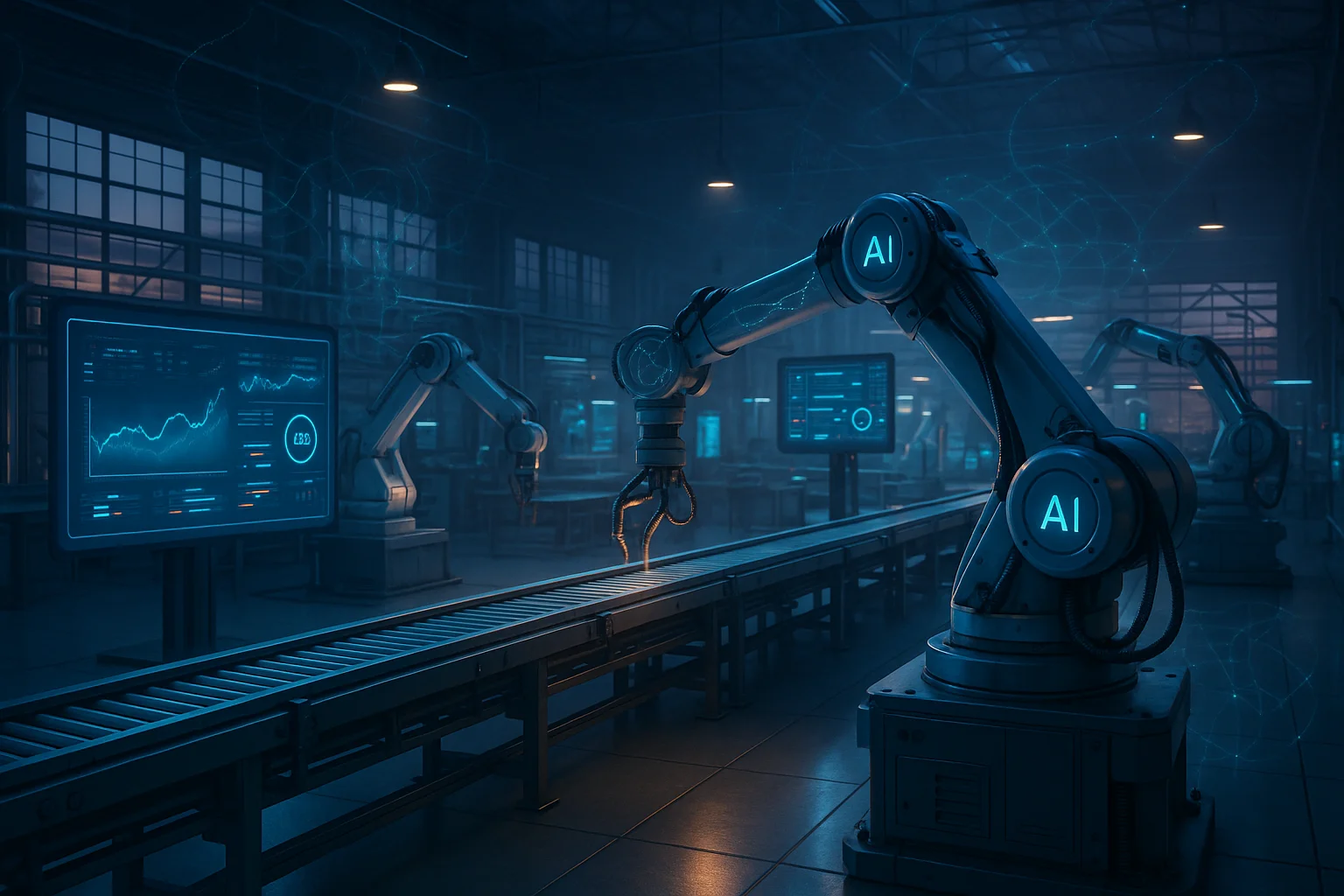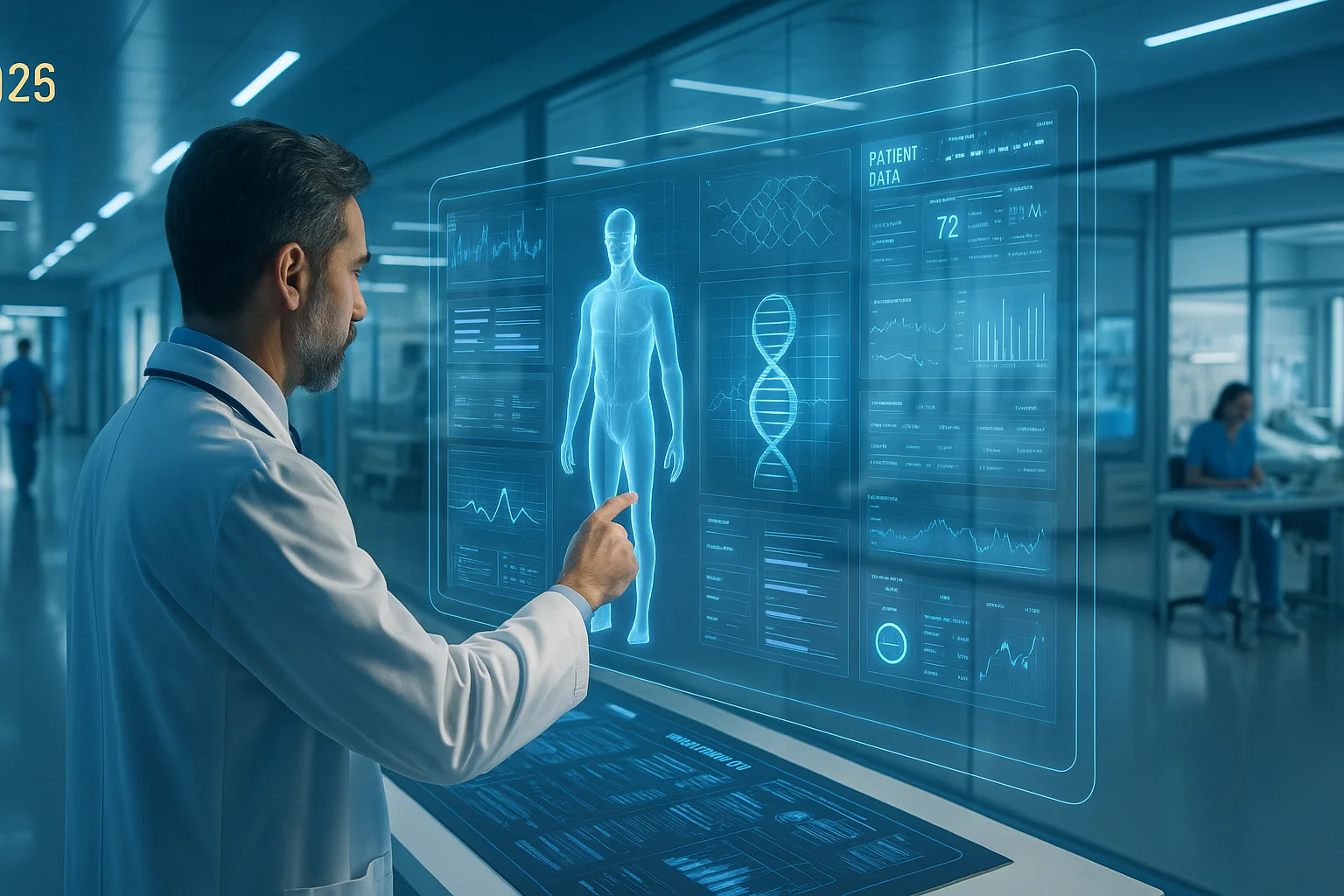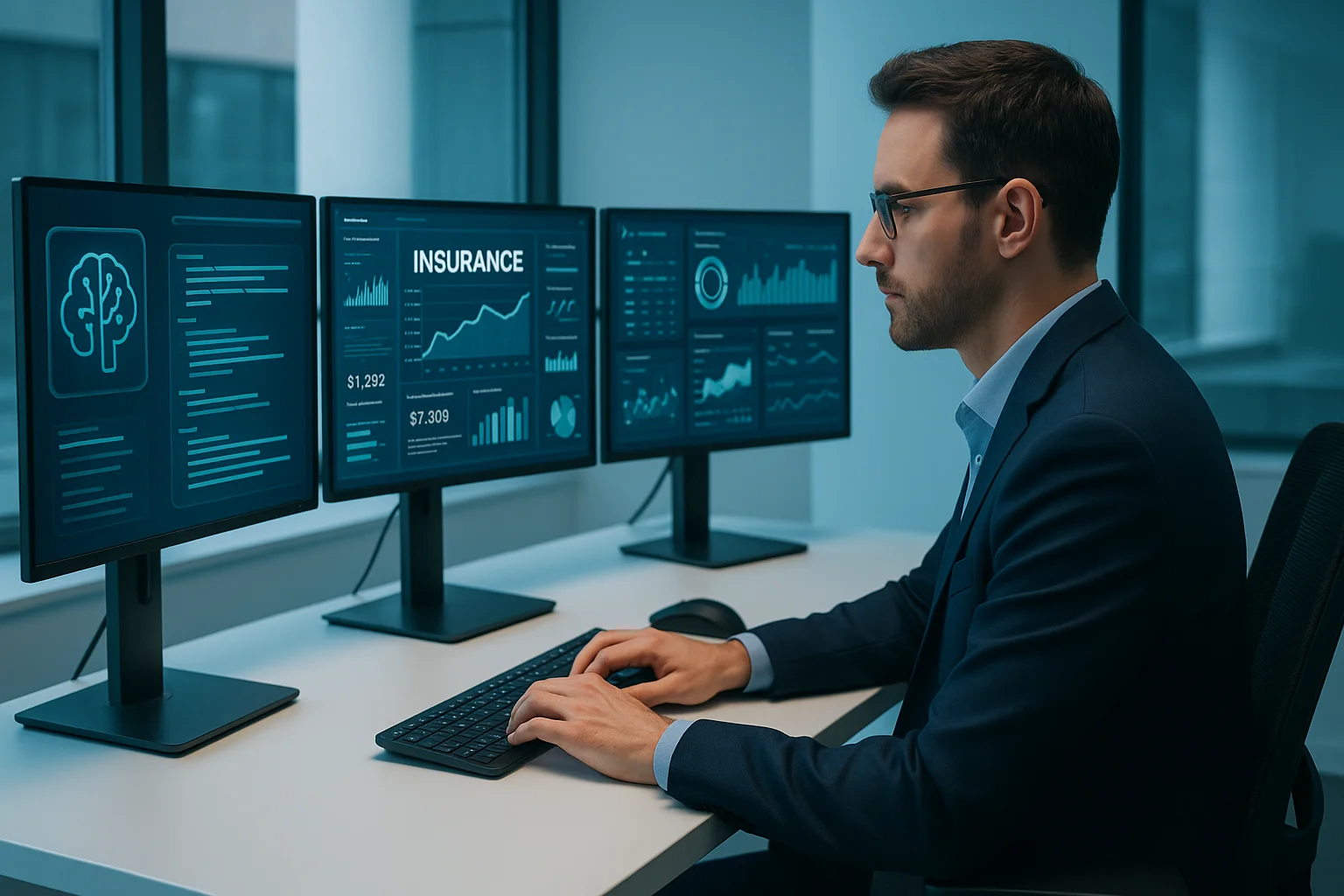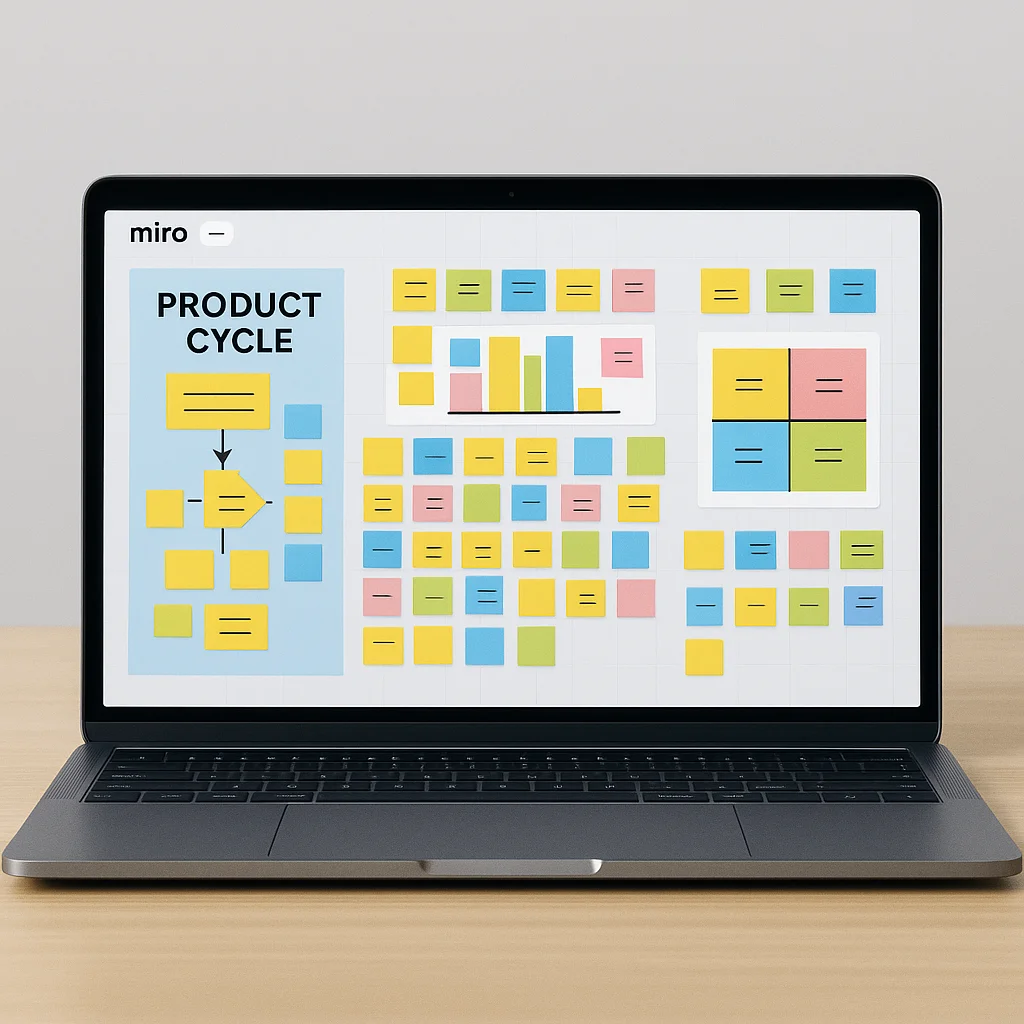For decades, healthcare has been built around reaction. Someone falls ill, doctors step in, and hospitals work to bring things back under control. It’s a system that has saved countless lives, but it has always been one step behind — treating problems after they happen instead of stopping them before they begin.
That’s now starting to change. Artificial intelligence is quietly shifting healthcare toward prevention and precision. Doctors can spot patterns faster, machines can process scans in seconds, and wearable devices keep an eye on warning signs long before a person feels unwell. The goal isn’t to replace human care — it’s to strengthen it, giving medical teams better tools, sharper insights, and more time to focus on the people behind the data.
Why AI Matters in Modern Healthcare
Healthcare produces more information than almost any other field. From patient scans to lab results and wearable data, a single hospital can generate 50 petabytes every year, according to the World Economic Forum. But much of this information never reaches its full potential because humans simply can’t analyze it fast enough.
Artificial intelligence is helping change that. By recognizing patterns, predicting outcomes, and organizing vast amounts of data, AI is turning raw numbers into insights that doctors can actually use. In a recent Cheif Healthcare Executive global survey, more than 80% of healthcare leaders said AI will soon play a vital role in how medical decisions are made. It’s no longer a futuristic add-on — it’s becoming part of the foundation of modern care.
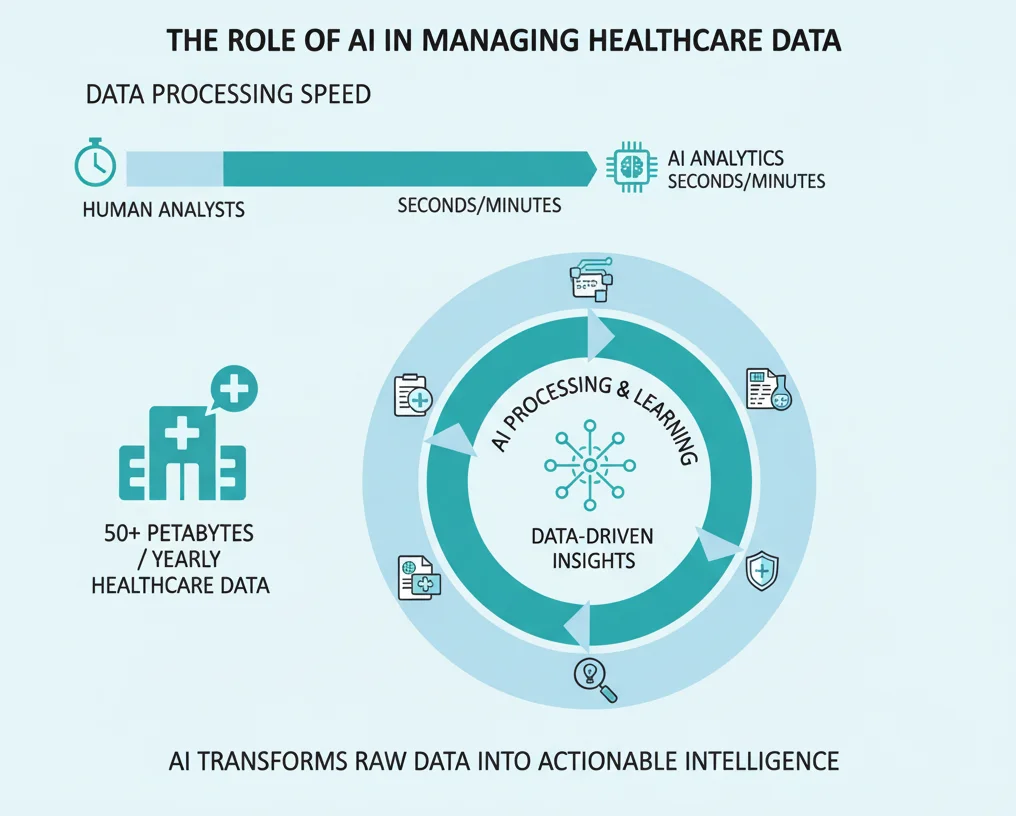
10 Ways AI Is Transforming Healthcare
Smarter Diagnostics and Early Detection
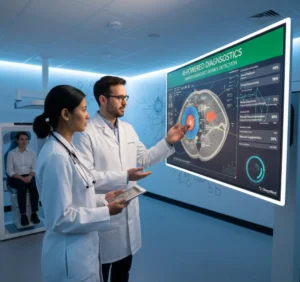
AI has changed how doctors see disease — literally. Machine-learning systems trained on millions of images can now catch the smallest details in scans that a human eye might miss. Hospitals like Moorfields Eye in London, working with DeepMind, use AI models that identify over 50 eye conditions as accurately as expert specialists. The same is happening in oncology and radiology, where algorithms detect tumors, strokes, and heart defects at an astonishing pace, often before symptoms surface.
The difference is time. What once took hours or days to analyze can now be done in seconds, giving doctors the head start they need to act early. Faster diagnosis means quicker treatment, better outcomes, and less anxiety for patients waiting on results — proof that artificial intelligence, when paired with human expertise, saves more than just time.
Predictive Analytics and Preventive Medicine
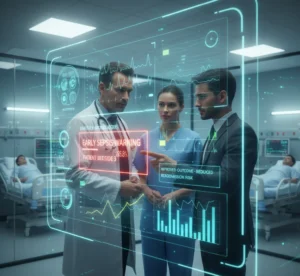
For decades, healthcare systems waited for illness to strike before stepping in. Predictive analytics flips that story. By analyzing years of patient records, lab data, and even wearable signals, AI predicts who might be at risk before symptoms appear. Hospitals using AI-powered monitoring have cut ICU transfers and readmissions by 20-30 percent, according to Strategic Market Research — not through magic, but by spotting early warning signs that humans often overlook.
This shift turns medicine into prevention rather than reaction. A diabetic patient can receive alerts before glucose levels become dangerous, and heart-failure risks can be managed before hospitalization. AI gives doctors foresight — and patients, control over their own health journey.
AI-Powered Drug Discovery
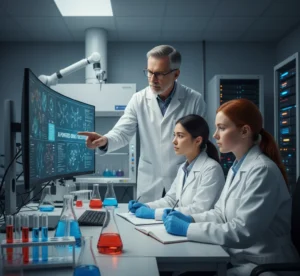 Bringing a new drug to market used to take a decade or more. AI has started compressing that timeline into years, sometimes months. Instead of physically testing thousands of compounds, machine-learning models simulate how molecules behave, predicting which will work before they’re ever made. Companies like Insilico Medicine and BenevolentAI have already produced viable drug candidates in record time, cutting R&D costs by almost half.
Bringing a new drug to market used to take a decade or more. AI has started compressing that timeline into years, sometimes months. Instead of physically testing thousands of compounds, machine-learning models simulate how molecules behave, predicting which will work before they’re ever made. Companies like Insilico Medicine and BenevolentAI have already produced viable drug candidates in record time, cutting R&D costs by almost half.
This means breakthroughs reach patients sooner. Faster discovery also opens the door to tackling rare diseases that were once financially impossible to research. AI isn’t just speeding science up — it’s widening its reach.
Virtual Health Assistants and Chatbots
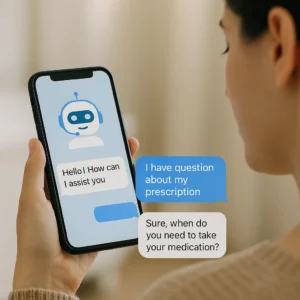 AI-based assistants are quietly becoming the welcoming face of modern healthcare. They help patients book appointments, check symptoms, manage medication reminders, and get quick answers to basic questions through chat or voice. A recent report from IBM Watson Health noted that more than half of patients now choose to begin with a virtual assistant when they need simple guidance rather than waiting to reach a doctor.
AI-based assistants are quietly becoming the welcoming face of modern healthcare. They help patients book appointments, check symptoms, manage medication reminders, and get quick answers to basic questions through chat or voice. A recent report from IBM Watson Health noted that more than half of patients now choose to begin with a virtual assistant when they need simple guidance rather than waiting to reach a doctor.
What makes these systems so valuable is the time they give back. Clinics experience lighter phone loads, staff spend less energy on routine paperwork, and patients can reach support any time of day or night. Instead of replacing human care, these digital assistants widen its reach—bringing timely help to people who might otherwise struggle to access it.
Personalized Treatment Recommendations
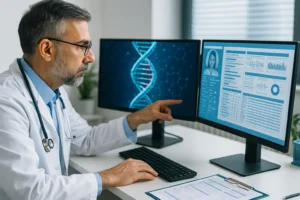 Every person’s biology tells a unique story, and AI helps doctors read it. By combining genetic sequencing, lifestyle data, and clinical history, AI can recommend personalized treatment plans that match each individual’s needs. Cancer specialists using Tempus AI or Foundation Medicine now design therapies tailored to a patient’s DNA, improving success rates by more than 40 percent according to GenomeMedicine research.
Every person’s biology tells a unique story, and AI helps doctors read it. By combining genetic sequencing, lifestyle data, and clinical history, AI can recommend personalized treatment plans that match each individual’s needs. Cancer specialists using Tempus AI or Foundation Medicine now design therapies tailored to a patient’s DNA, improving success rates by more than 40 percent according to GenomeMedicine research.
This personalization also reduces side effects and wasted treatments. For patients, it means therapies that feel built for them — medicine that finally treats the person, not just the disease.
Medical Imaging Enhanced by Deep Learning
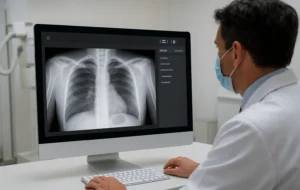 Medical imaging has been one of AI’s greatest success stories. Deep-learning systems can analyze thousands of scans faster than any human, detecting details invisible to the naked eye. Researchers at Stanford Medicine showed that AI could detect pneumonia from chest X-rays twice as fast as radiologists while maintaining equal accuracy.
Medical imaging has been one of AI’s greatest success stories. Deep-learning systems can analyze thousands of scans faster than any human, detecting details invisible to the naked eye. Researchers at Stanford Medicine showed that AI could detect pneumonia from chest X-rays twice as fast as radiologists while maintaining equal accuracy.
Similar tools are being adopted for cancer detection, bone fracture diagnosis, and cardiac imaging. This technology doesn’t replace radiologists — it supports them, giving professionals more time to focus on complex analysis.
AI for Hospital and Resource Management
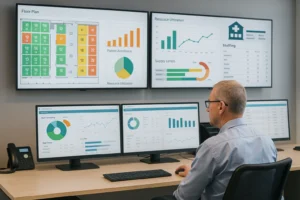 Hospitals operate like mini-cities — and AI is helping them run smoother. Predictive systems can estimate patient admissions, optimize staff schedules, and manage supplies more efficiently. Deloitte Insights found hospitals using AI reduced waiting times and improved operational efficiency by 25 to 30 percent, creating calmer, more organized facilities.
Hospitals operate like mini-cities — and AI is helping them run smoother. Predictive systems can estimate patient admissions, optimize staff schedules, and manage supplies more efficiently. Deloitte Insights found hospitals using AI reduced waiting times and improved operational efficiency by 25 to 30 percent, creating calmer, more organized facilities.
The results are felt everywhere. Patients spend less time in queues, medical teams face fewer last-minute shortages, and administrators can focus on strategy instead of spreadsheets. It’s the quiet kind of innovation that makes care feel seamless.
Remote Patient Monitoring and Wearables
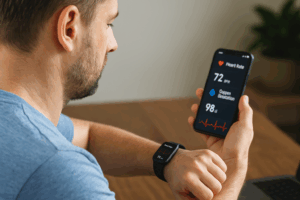 Wearables have turned everyday life into a stream of health insights. Smartwatches and connected patches measure heart rhythm, blood oxygen, sleep patterns, and even stress levels. AI interprets this constant flow of data to detect irregularities before they become emergencies. A study conducted by University of California, for instance, found that AI-powered ECG readings identified atrial fibrillation with 97 percent accuracy — an early warning that can prevent strokes.
Wearables have turned everyday life into a stream of health insights. Smartwatches and connected patches measure heart rhythm, blood oxygen, sleep patterns, and even stress levels. AI interprets this constant flow of data to detect irregularities before they become emergencies. A study conducted by University of California, for instance, found that AI-powered ECG readings identified atrial fibrillation with 97 percent accuracy — an early warning that can prevent strokes.
For patients with chronic illnesses, it’s like having a mini-doctor on their wrist. These devices bring healthcare into the real world, giving physicians live updates and individuals peace of mind wherever they are.
Generative AI in Clinical Documentation
 Doctors spend nearly a third of their day on paperwork, but generative AI is lifting that weight. New tools record consultations, summarize key points, and automatically fill in electronic health records. Early trials show that automation cuts documentation time by about 56 percent while improving accuracy and compliance.
Doctors spend nearly a third of their day on paperwork, but generative AI is lifting that weight. New tools record consultations, summarize key points, and automatically fill in electronic health records. Early trials show that automation cuts documentation time by about 56 percent while improving accuracy and compliance.
The biggest shift isn’t technical — it’s emotional. Physicians regain time for what matters most: connecting with patients. Hospitals that adopt these systems report happier staff, clearer communication, and smoother patient experiences across the board.
AI for Hospital and Resource Management
 When the world was hit by COVID-19, artificial intelligence quietly became one of the most valuable tools in the fight. Health agencies began using predictive models to trace infections, monitor virus mutations, and anticipate where outbreaks might spread next. Today, those same systems analyze travel patterns, population density, and real-time health data to forecast risks weeks in advance. A study in The Lancet Digital Health found that these AI-driven models improved the accuracy of epidemic predictions by more than 40 percent compared to traditional methods.
When the world was hit by COVID-19, artificial intelligence quietly became one of the most valuable tools in the fight. Health agencies began using predictive models to trace infections, monitor virus mutations, and anticipate where outbreaks might spread next. Today, those same systems analyze travel patterns, population density, and real-time health data to forecast risks weeks in advance. A study in The Lancet Digital Health found that these AI-driven models improved the accuracy of epidemic predictions by more than 40 percent compared to traditional methods.
The impact goes far beyond pandemics. The same technology now helps track seasonal flu, plan vaccine distribution, and prepare hospitals for sudden surges in patients. In simple terms, AI gives public health teams the ability to look ahead — to act before a crisis unfolds, rather than after. It’s not replacing human expertise; it’s giving it the foresight the world has always needed.
The Benefits of AI in Healthcare for Doctors and Patients
AI is making healthcare faster, clearer, and more personal. For doctors and hospital staff, it takes away much of the heavy lifting — managing patient data, reviewing scans, and automating everyday tasks. That means more time for what matters most: caring for people. With AI tools handling the routine work, medical teams can make quicker, better-informed decisions that directly improve patient outcomes.
Patients are seeing the benefits too. Diagnoses come faster, appointments move smoothly, and treatments are becoming more personalized. Whether it’s an app that reminds someone to take their medicine or a system that helps detect early signs of illness, AI is helping healthcare feel more human — not less.
Challenges and Ethical Responsibilities in Using AI
As AI becomes part of everyday healthcare, the biggest challenge isn’t the technology itself — it’s how we use it. Every system depends on sensitive data, so protecting patient privacy and earning trust must come first. Hospitals are learning that speed and innovation mean little if people don’t feel their information is safe.
There’s also a human side to remember. AI can guide decisions, but it can’t replace empathy or experience. A doctor’s instinct, built over years of care, still matters most when lives are at stake. The key is balance — letting AI handle the routine work while people focus on understanding, listening, and choosing what’s right for each patient.
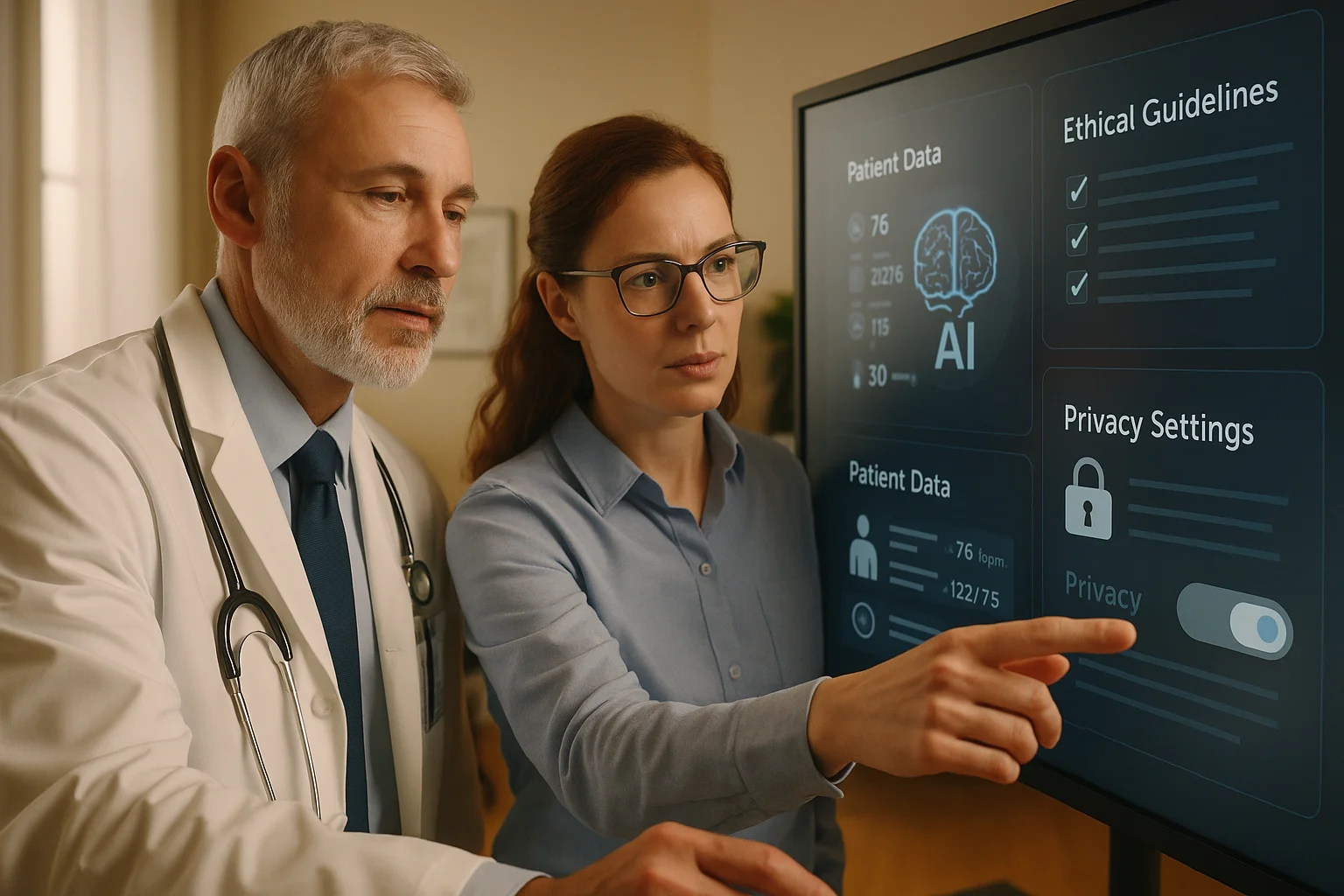
The Future of AI in Healthcare: Smarter, Kinder, and Predictive
The next phase of healthcare isn’t just about technology — it’s about anticipation. AI is shifting medicine from treating illness to preventing it. Imagine a system that sends an alert when your heart rhythm changes slightly or recommends a lifestyle change before a condition develops. These ideas are no longer far off; they’re already taking shape in leading hospitals and health startups worldwide.
At Techelix, we’re helping healthcare organizations build that future. Through our Artificial Intelligence services, we create systems that help medical teams diagnose faster, predict risks earlier, and deliver care that feels deeply personal. The goal is simple: to make technology a quiet partner in better health, one that helps people live longer, safer, and more confident lives.
Build custom AI solutions that deliver real business value
From strategy to deployment, we help you design, develop, and scale AI-powered software that solves complex problems and drives measurable outcomes.
